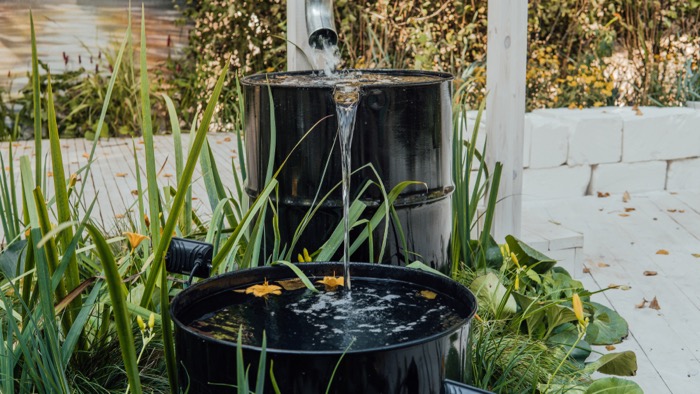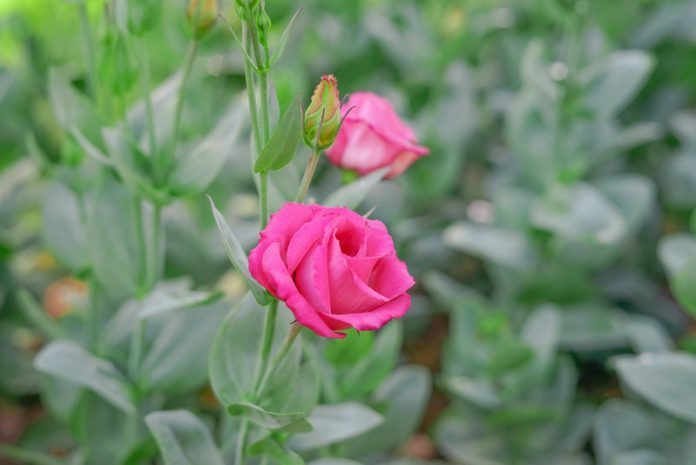There are plenty of drought tolerant plants available for people living in areas that are prone to those conditions, but what about roses? Can they survive in drought conditions? The truth is, while there are some roses that can handle infrequent watering, most of them need water to produce their beautiful blooms and sweet fragrances. This is especially true if you love floribundas, grandifloras and hybrid tea roses. But this doesn’t mean you can’t grow roses in your garden. There are plenty of ways to get around a drought and keep your roses and other flowering shrubs happy.
First off, it’s important to know just what type of drought conditions you experience in your area. Can it be a couple weeks of no water or is it months on end where you might only get an inch or two of rain? Knowing exactly what your weather is like will help you plan ahead and ensure that you have the resources in place to keep your roses’ soil moist in the face of drought.

Resources for water in a drought
There are plenty of tools available for gardeners to get around a temporary or long-term drought. Some require a bit more planning than others, but if you start now, you can equip a few of these tools to make conserving and using water a whole lot easier next drought season.
1. Rain barrels: This may seem obvious, but a lot of people forget you can capture the rain that does fall in a few unique ways. Most people like to utilize rain barrels. These barrels connect to a downspout from the roof of your home and collect the rain every storm. A cover on the barrel prevents evaporation, so you will be able to use that water when the weather starts to dry up. Some rain barrels have attachments for hoses on them, making it easy to use that water in the garden.
2. Greywater: Greywater is water that has already been used. Typically, it’s the water from your laundry machine. If you use natural laundry detergents, or chemicals free of boron or bleach, you can use that water instead of dumping it down the sewer pipe. The process may seem a little bit involved, but all you have to do is install a diverter valve that allows you to either send water to the sewer or through a plastic pipe that you send outdoors. If you use something that would be toxic to plants, send it to the sewer. If you use water that won’t hurt your flowering shrubs, send it outside.
From there, the pipe can go straight to trees, perennial plants or shrubs like roses, or you can send it to a small pit filled with mulch. This will soak the mulch so you can place wet mulch around your roses and keep them happy during drought season. Before installing a greywater system, double check with your local authorities. Some states frown upon greywater practices—but many don’t so it pays to check.
3. Drip irrigation: Drip irrigation systems are made up of tubes with little watering heads attached to them. You connect the whole system to a water pout on your house or in your yard and direct the watering heads along the hose to your plants. This ensures all your plants are getting the water they need without wasting a single drop. Installing a drip system might take a little bit of time, but it’s worth it when a drought happens.
4. Soaker hoses: Soaker hoses are a budget friendly option that allows you to get water to your roses or other plants in the garden without too much effort spent installing. Soaker hoses are basically hoses with small holes in them that lets water slowly seep out over the entire length of the hose. While not as precise as drip irrigation, they will make sure that your roses are getting the water they need over the course of the drought.
5. Tree Diapers: While they might have a funny name, they will work when your plants need water. Basically, they are a donut-shaped balloon that holds water. When the ground dries, the Tree Diaper seeps water into the soil, making sure it always stays at the perfect moisture. These can work great if you only have a couple of rose bushes, but they could be cost prohibitive if you have an entire garden of roses.

While irrigation and water collection are great options for ensuring your roses have water when they need them, it’s important to do what you can to also prevent the soil from drying out. Here are a couple ways to do just that:
- Mulch your roses: While many people choose to mulch because it adds a finished look to your garden, there are plenty other benefits to mulching. For instance, mulch can help slow weed growth, and it can also help your soil retain its moisture. The most important thing when mulching is to make sure you lay down enough mulch. You want your mulch to be between 3-4 inches thick. This will help keep your plants from drying out during long periods without water.
- Give your roses a deep soak: If you know a drought is pending, give your roses a deep soak. By doing this, you can make sure there’s already plenty of moisture in the dirt so that your roses can stand to go a little longer without being watered. It may be just what you need to bridge the gap between rainstorms.
- Use water-retaining materials in your soil: There are products on the market that tote their ability to hold water. You simply sprinkle these into the soil and it gives your roses an extra chance at staying hydrated. If you prefer organic options, you can add things like newspaper, compost or peat moss to your soil. These will help keep the dirt moist through dry spells.
There are many options available to ensure your roses can stay cared for through a drought. If it still seems like it’s too dry in your area to grow roses, try container roses. These are smaller versions of roses designed to thrive in pots around your house and yard. With containers, you can control the watering more easily.
With a little bit of creativity, you’ll be able to ensure your roses grow to their full potential even through a drought.


